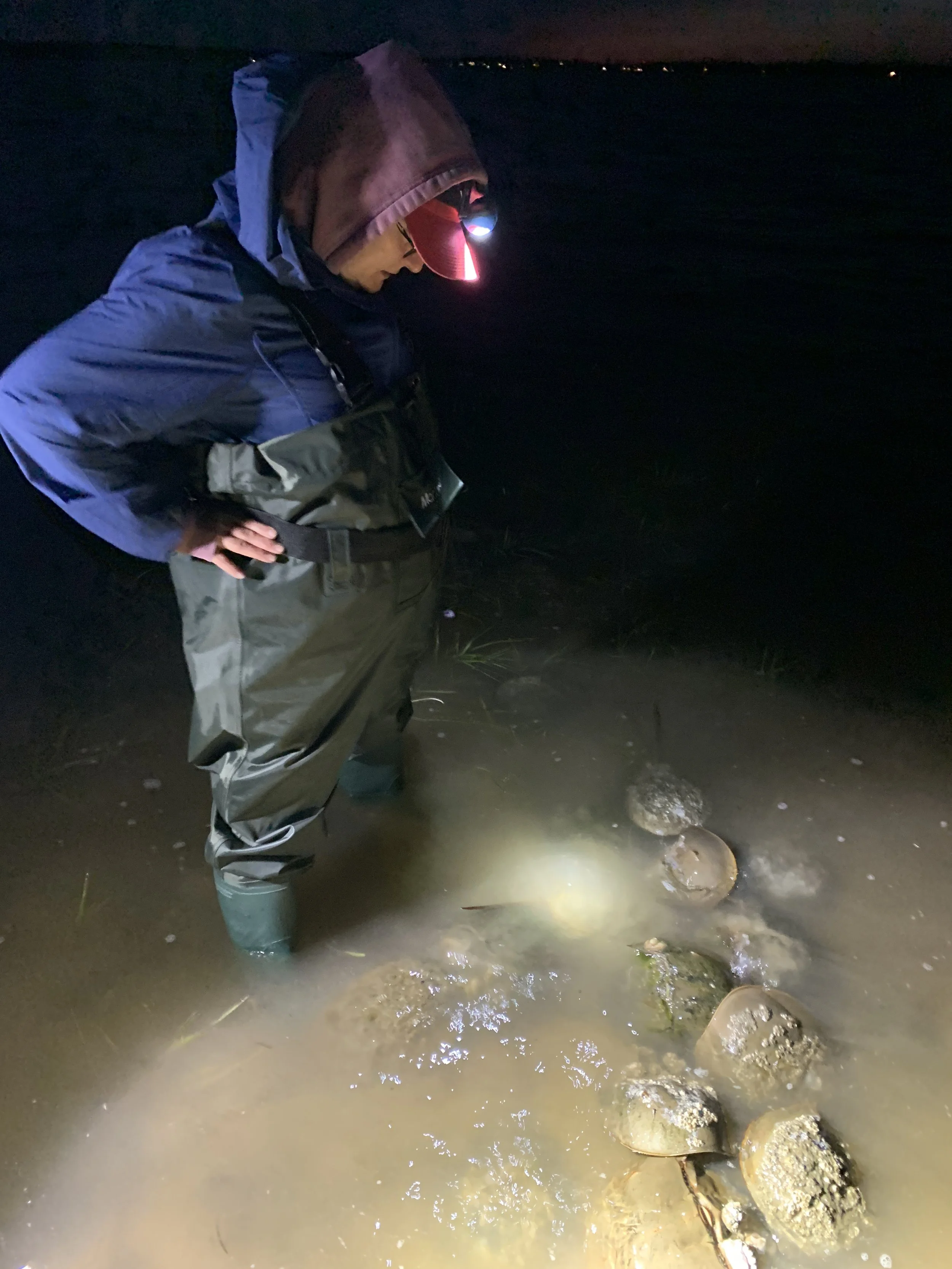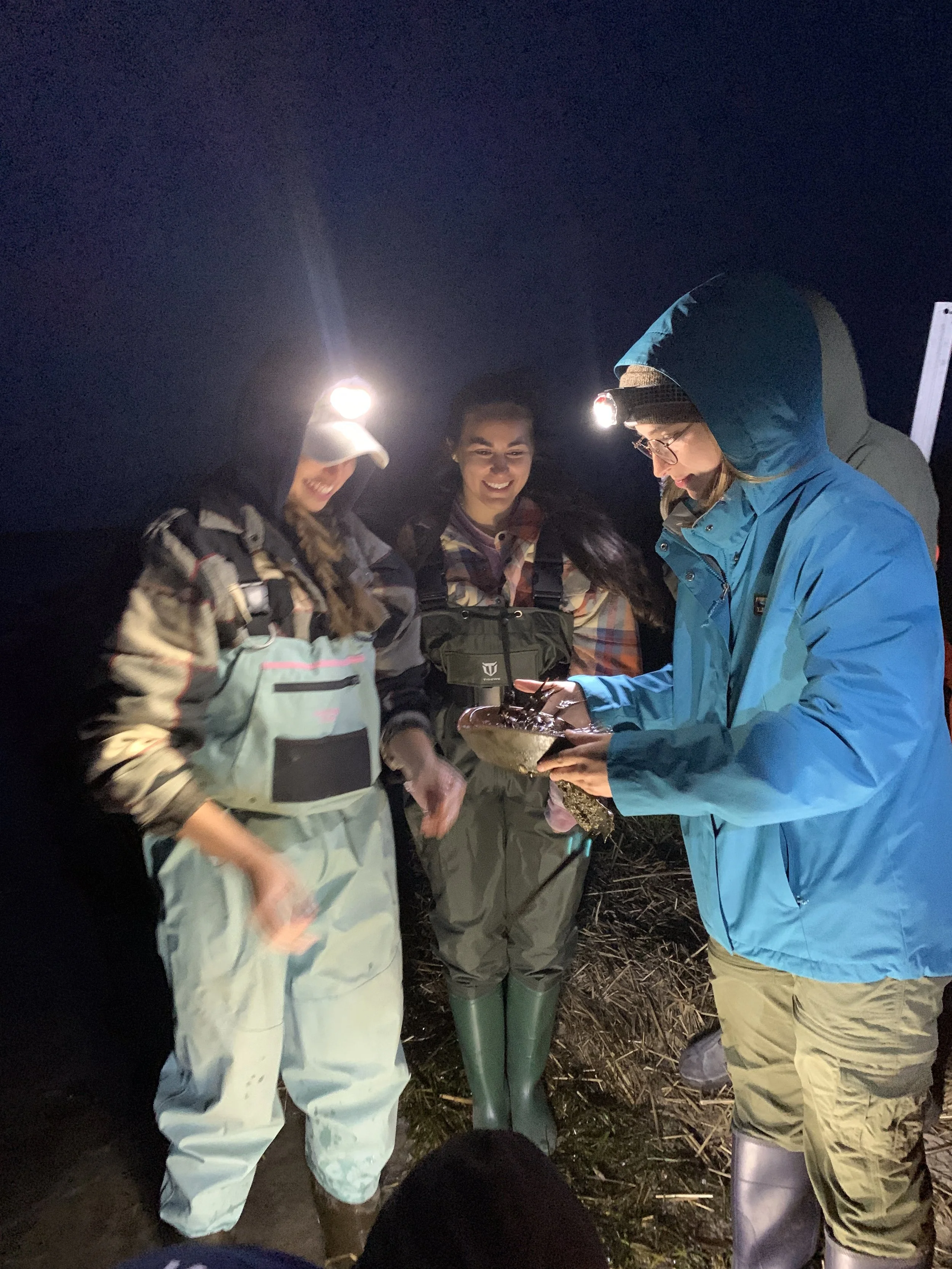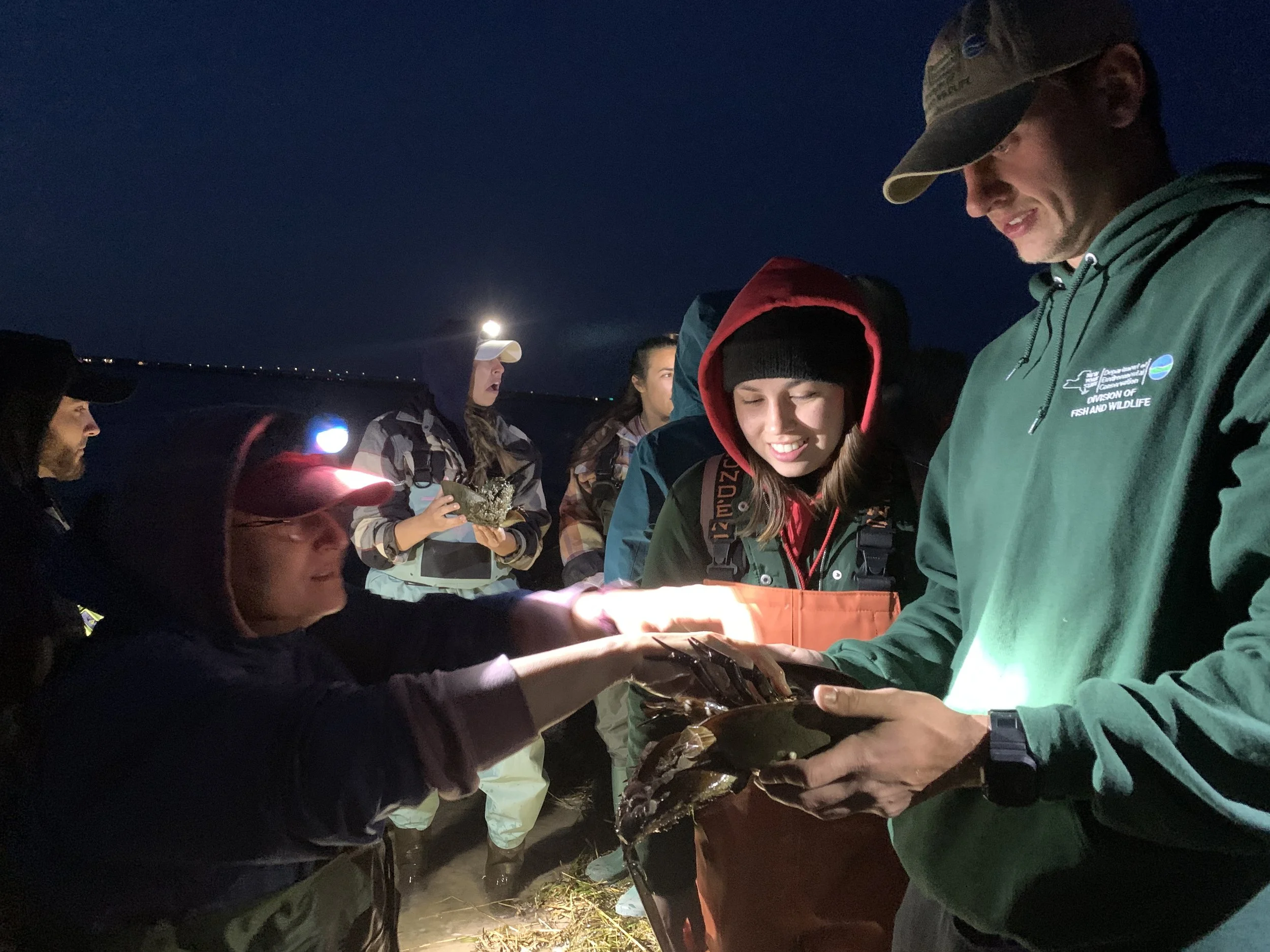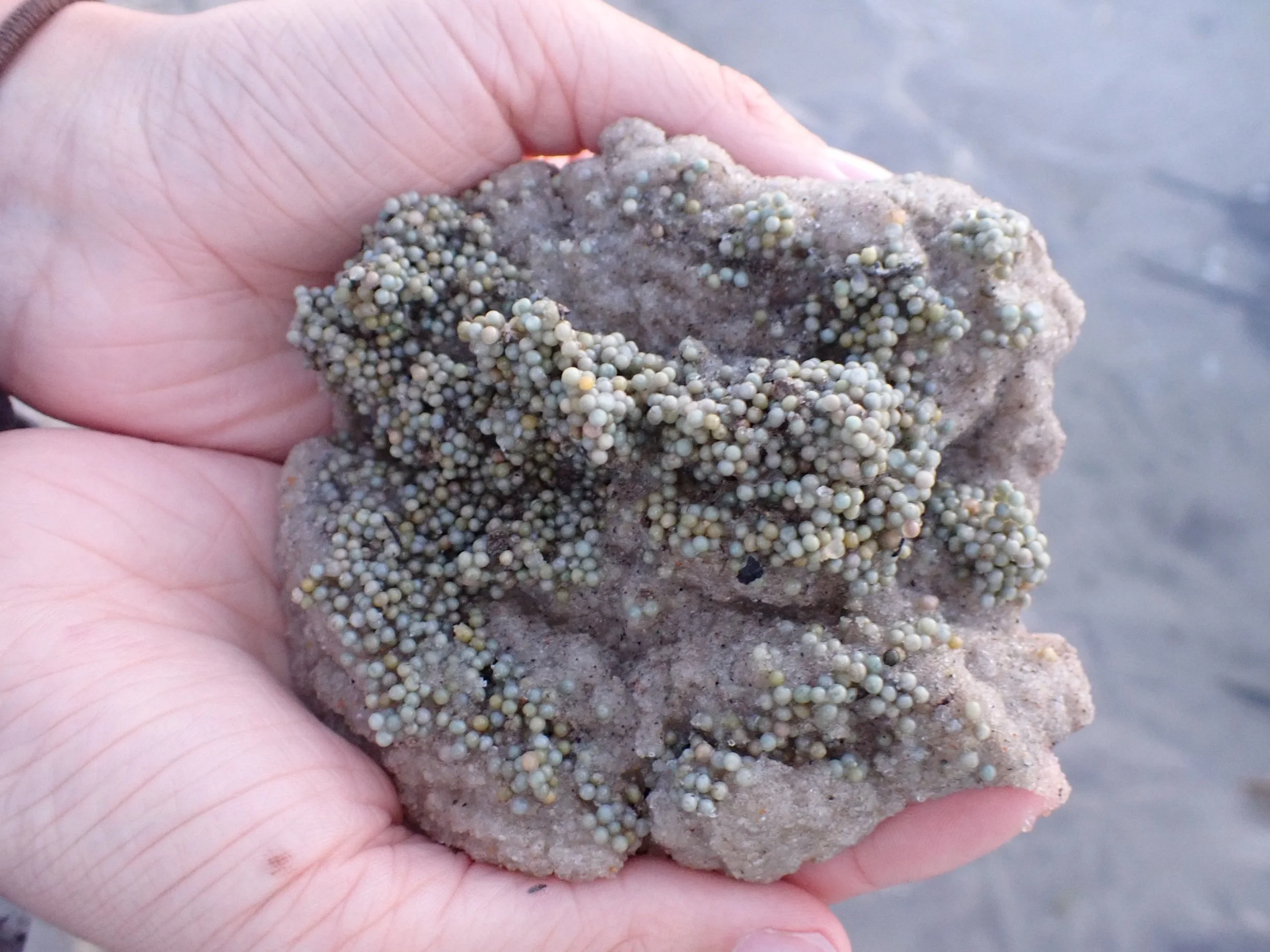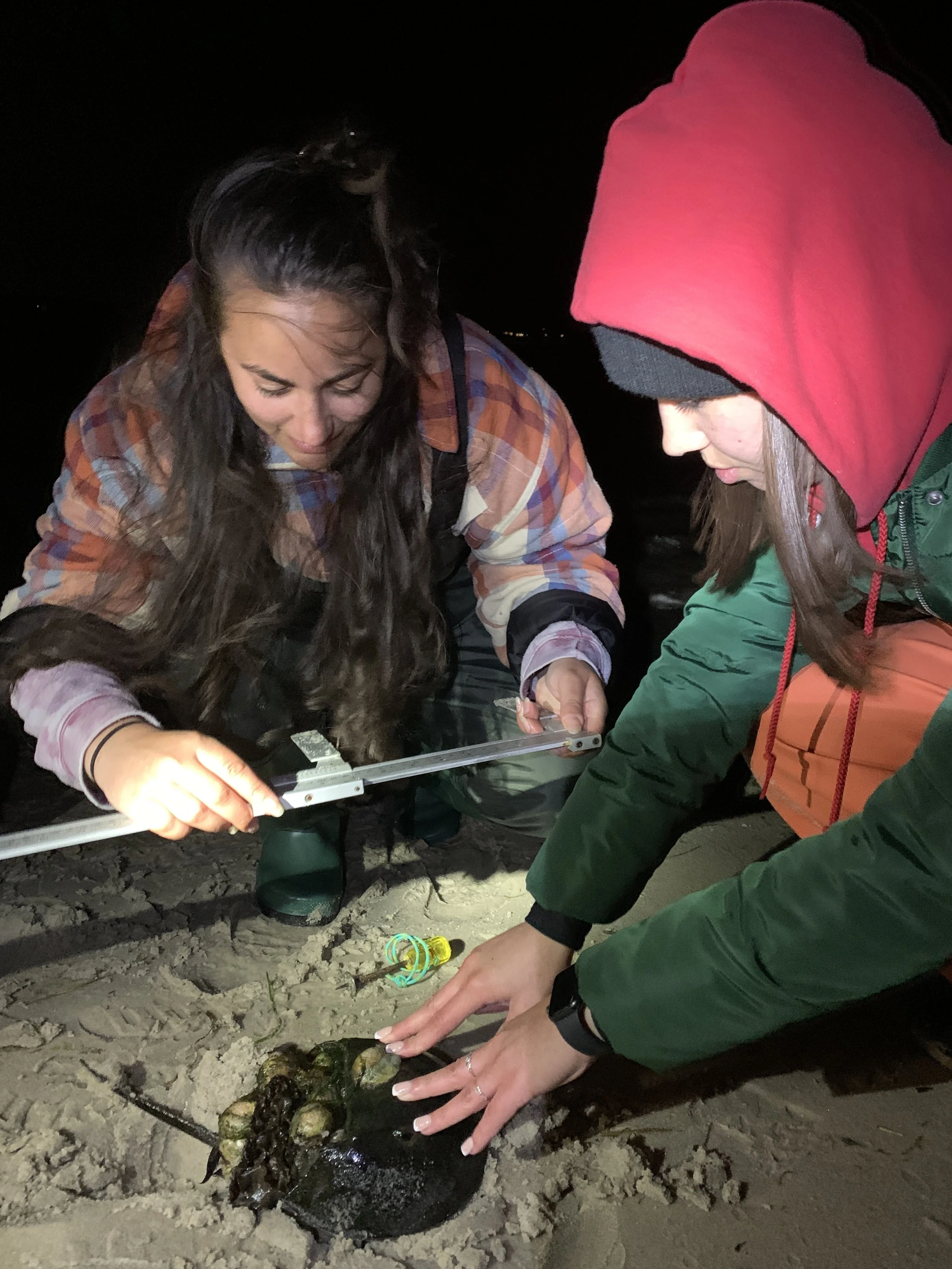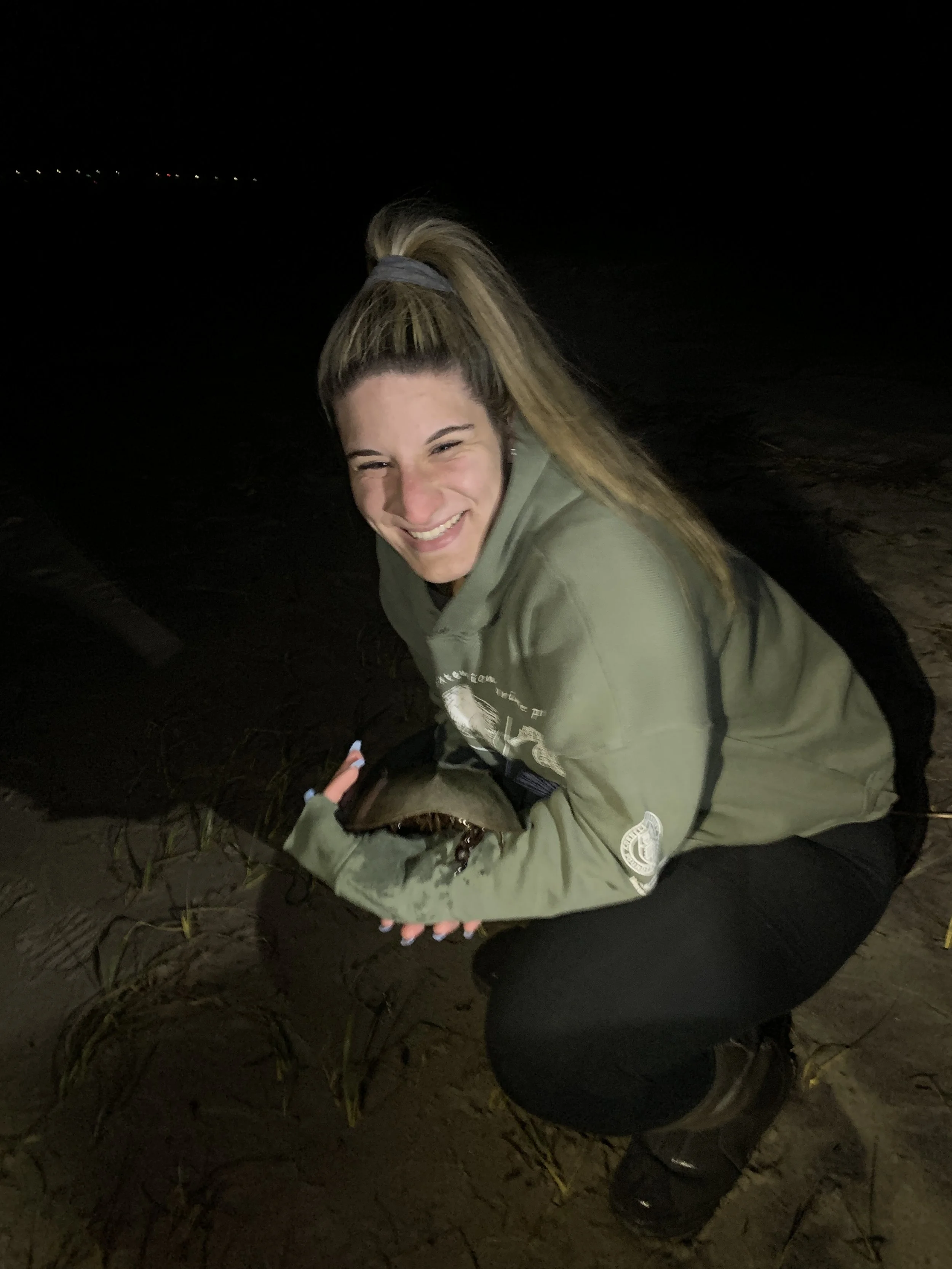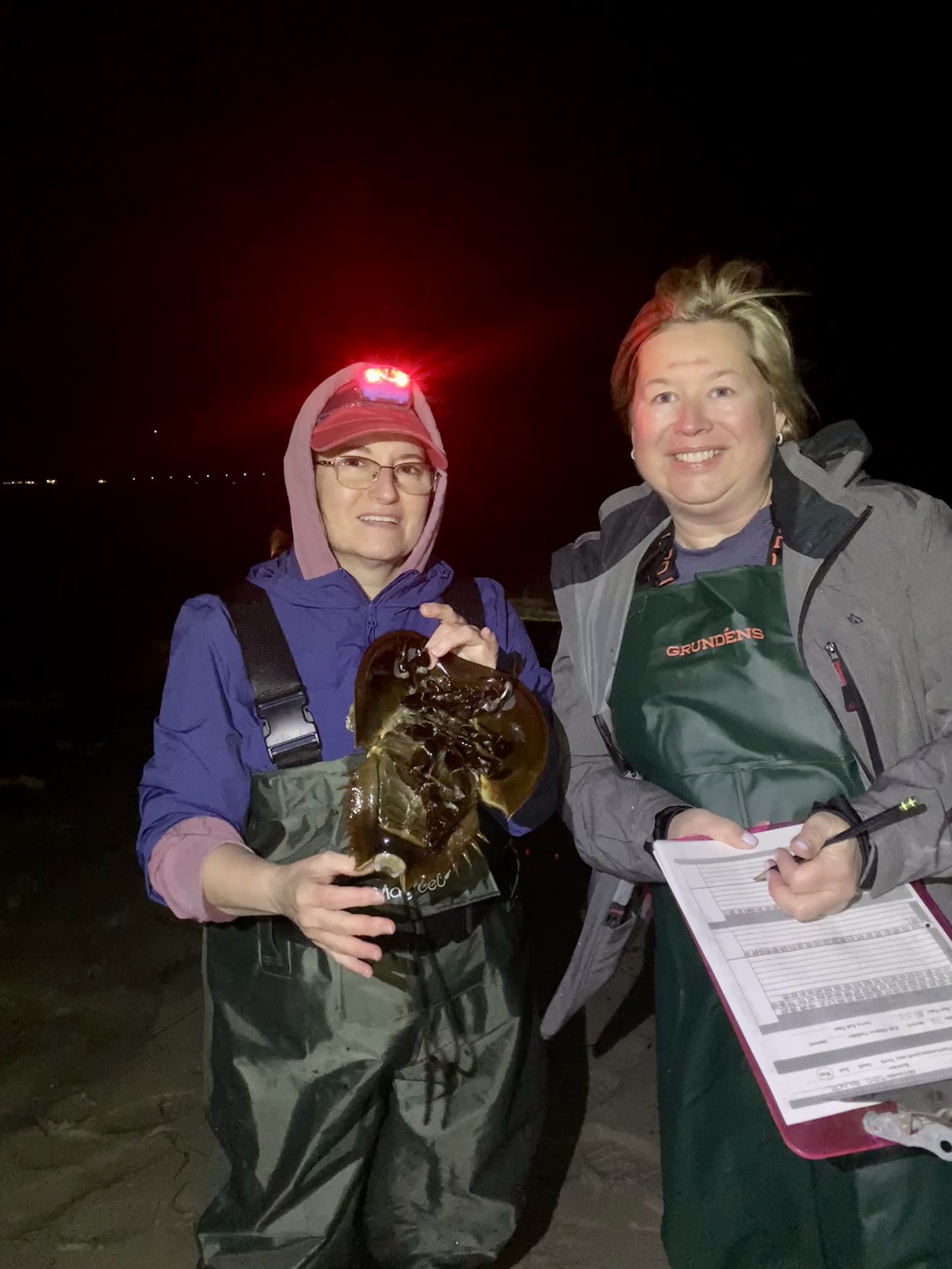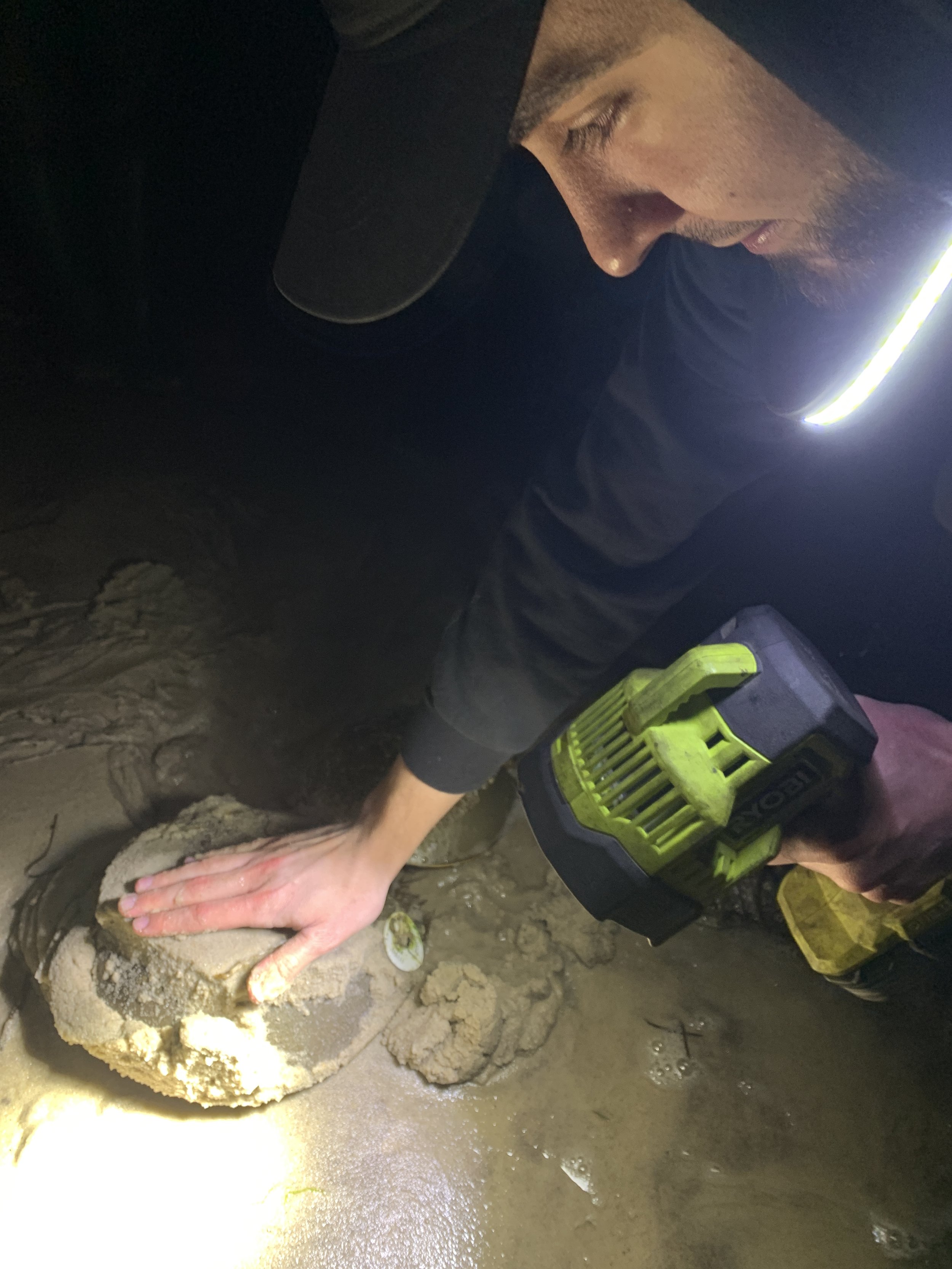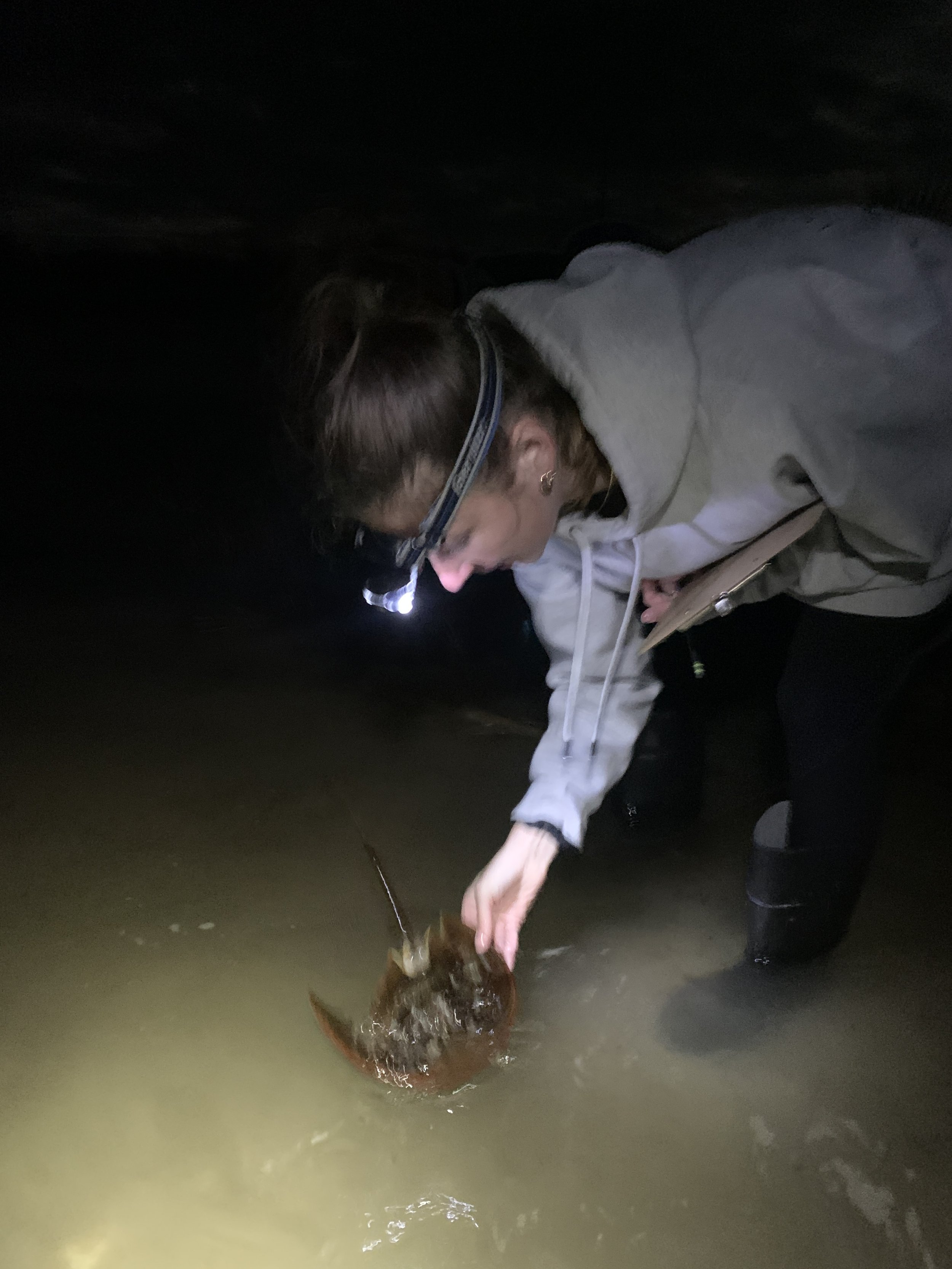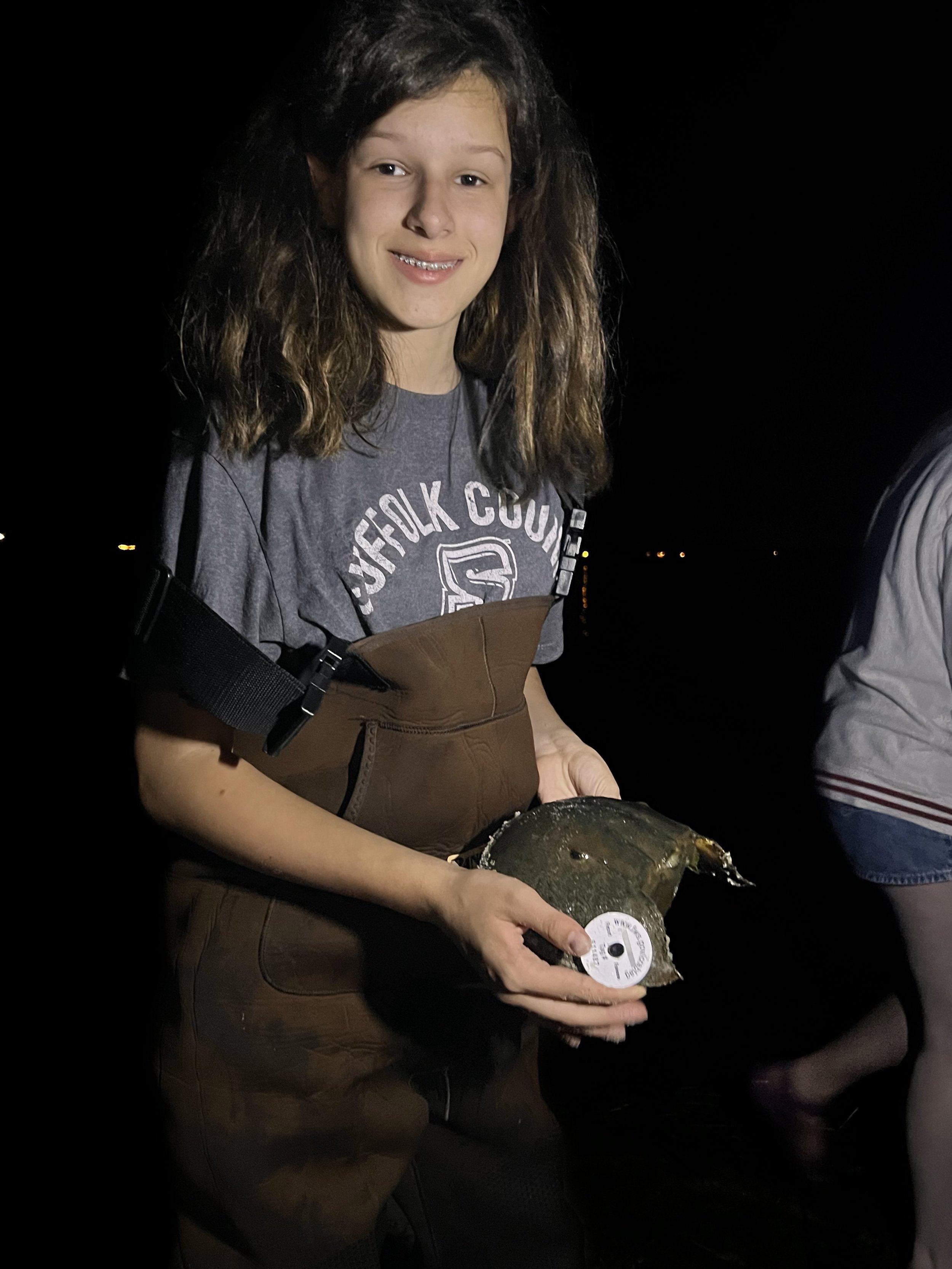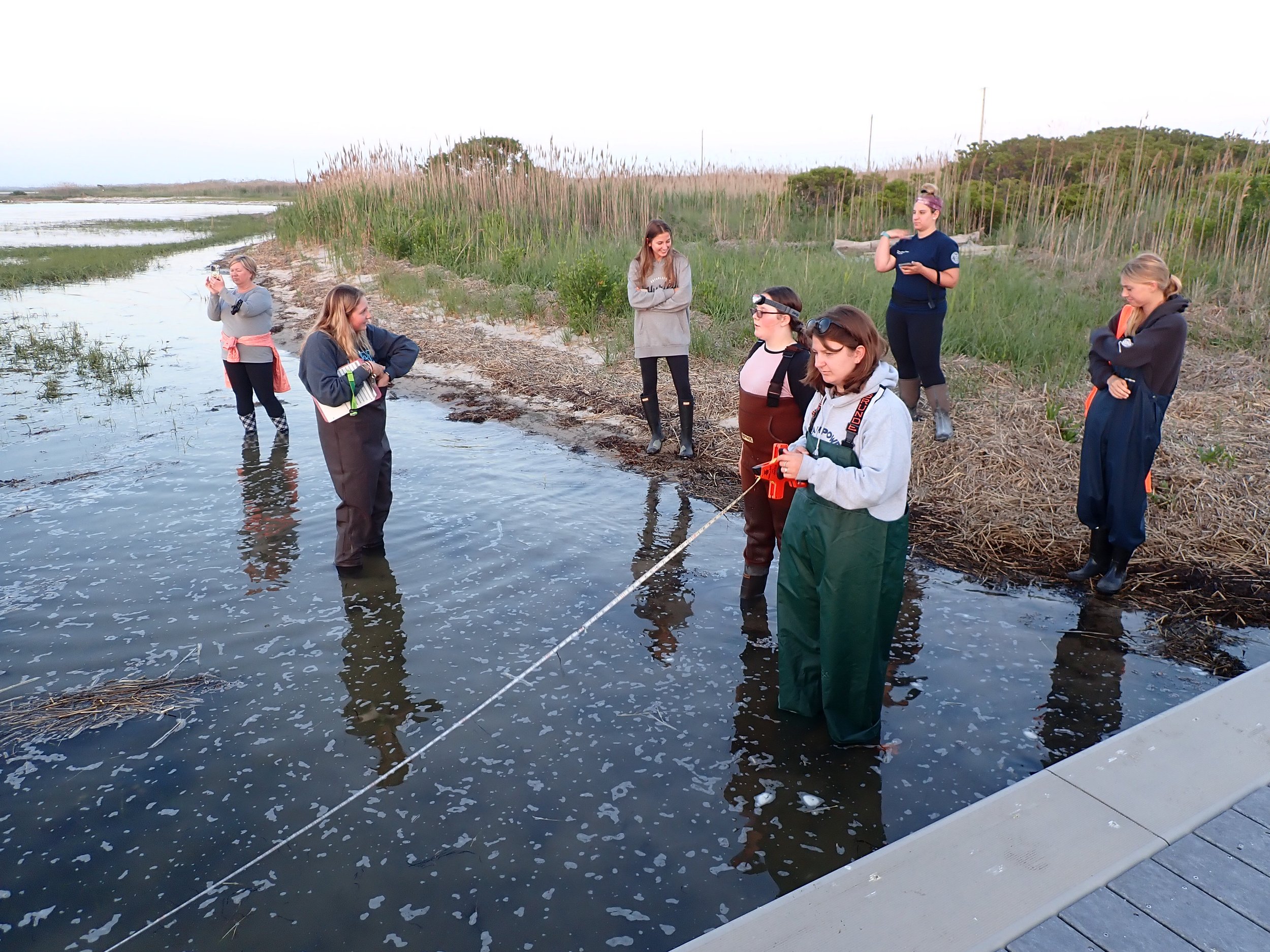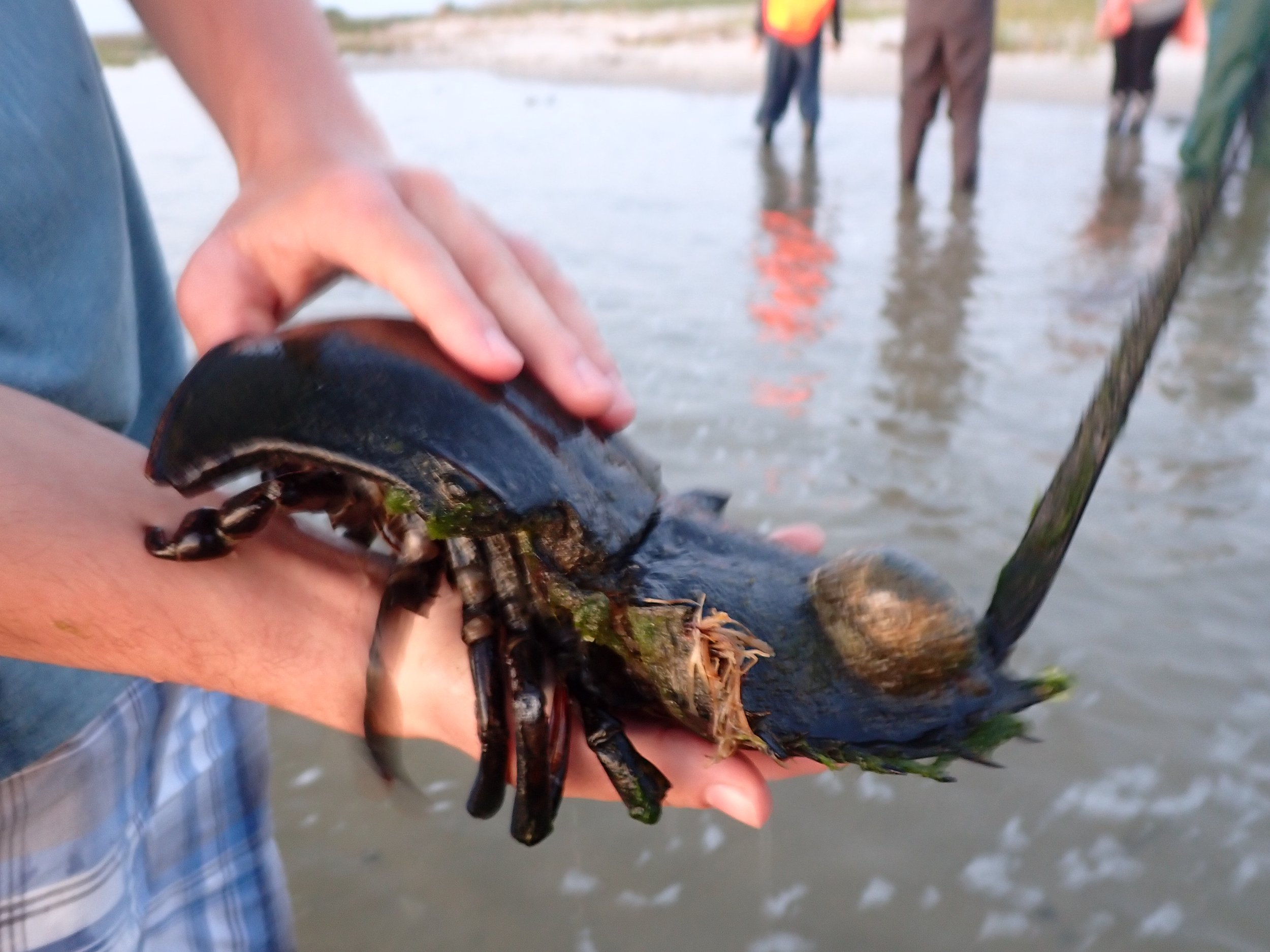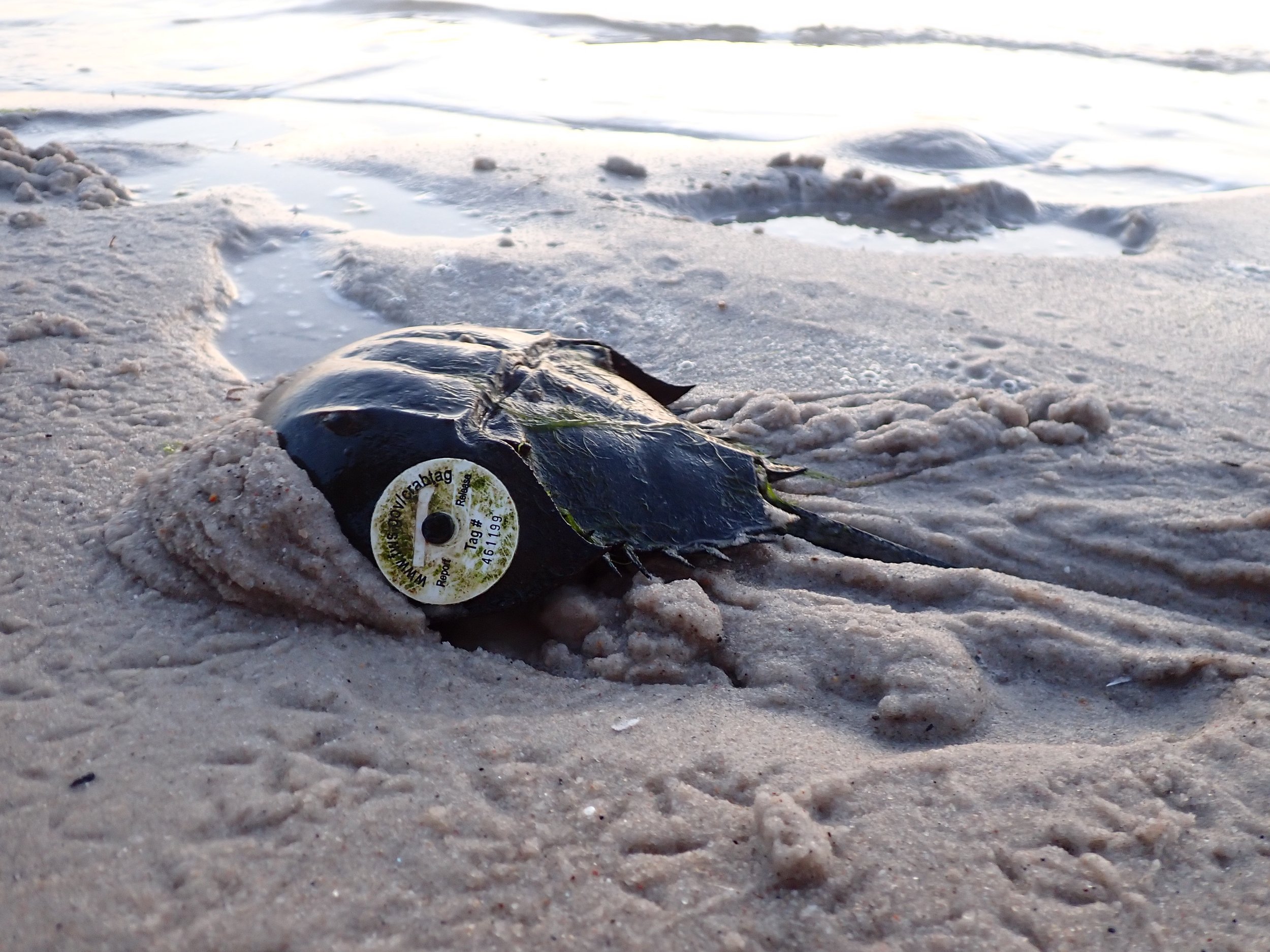Horseshoe Crab Hazel
As the 2023 Horseshoe crab monitoring season comes to close, volunteer coordinator, Hazel Wodehouse reflects…
I grew up far from the ocean, in a small farm town south of Buffalo. As a kid I read books about dinosaurs, and wished I could go back to prehistoric times to meet them. They weren’t scary to me, just ancient and foreign and mysterious. As a young scientifically curious teenager, I was lucky to have two amazing science teachers, who ran a marine biology club. We’d fund raise all year to be able to travel to the Bahamas and Florida Keys. I was in 10th grade the first time I held a live horseshoe crab in my hands. Ancient and foreign and mysterious, this gentle, yet tough creature captivated me. When we all had to choose alliteration nicknames on the trip, mine was Horseshoe Crab Hazel, without a doubt.
Cut to 2 decades later, and I find myself strolling the shores in the dark, lit by the full moon, counting horseshoe crabs with my trusty volunteer crew. Now, I get to see the wonder flash across their eyes as they witness the spectacle of 1000s of adult horseshoe crabs emerging along the shore to lay eggs in the sand. Horseshoe crabs have roamed the oceans for 450 million years, 200 million years before the dinosaurs! As a species, they have witnessed supercontinent Pangaea form and break apart. They evolved during a time when there were no plants or animals on land, when their extinct trilobite cousins ruled the sea floor. Natural selection must have favored animals that could lay their eggs in sand, at the highest tides of the full and new moons. Here, they would have been safe from the predators of the sea for millions of years.
Today, those precious horseshoe crab eggs fuel a bustling coastal food chain. A single female can lay up to 80,000 eggs per season, and with 1000s aggregating along the shores from late April to early July, migrating shore birds have a fast-food feast after each night of horseshoe crab mating. This fat-rich diet gives the birds energy for their long migrations, and therefore, influences multiple food-web systems across the globe.
Most notably, horseshoe crabs serve an important role for humans in the biomedical industry. The copper-based, blue/green blood of horseshoe crabs contains special compounds capable of detecting gram-negative bacteria and is used for testing any medical device or vaccine that will go in the human body. Unfortunately, our dependence on horseshoe crabs for medicine, as well as taking them for bait, has resulted in an overall decline of this species.
Intern, Kaia, teaches a young volunteer to tag a horseshoe crab.
This season at Tiana Bayside, our adventurous volunteers and Back to the Bays interns recorded a total of 6,736 Horseshoe crabs over only 10 monitoring dates. (The super high tides on Dune Rd. blocked us from reaching our site 2 nights this year.) Our volunteers worked hard to put out 209 new tags on horseshoe crabs, and recovered 43 old tags on live crabs! If you see one of these tagged crabs wondering around, be sure to report it the website. You’ll not only receive a certificate and beautiful pewter pin in the mail, you will also be contributing to real scientific data that will help inform regulations and conservation to keep this important “living fossil” around for generations to come.
This is where the NY Horseshoe Crab Monitoring Network comes in. I feel fortunate to have had the opportunity to educate and train citizen scientists in our volunteer run population monitoring at Tiana Bayside in Hampton Bays. Out there in the dark, counting 1000s of crabs at a time, tagging as many as we can, knowing they may be spotted and recorded the next night by another crew on another beach, it feels like we are part of something much bigger.
Special thanks to
My co-coordinator, Danielle Morris
Back to the Bays Interns: Kaia, Lily, Jackie, Joanna, Lane, + Fiona
And ever-ready volunteers Susan Ruocco and crew
~ Horseshoe Crab Hazel
